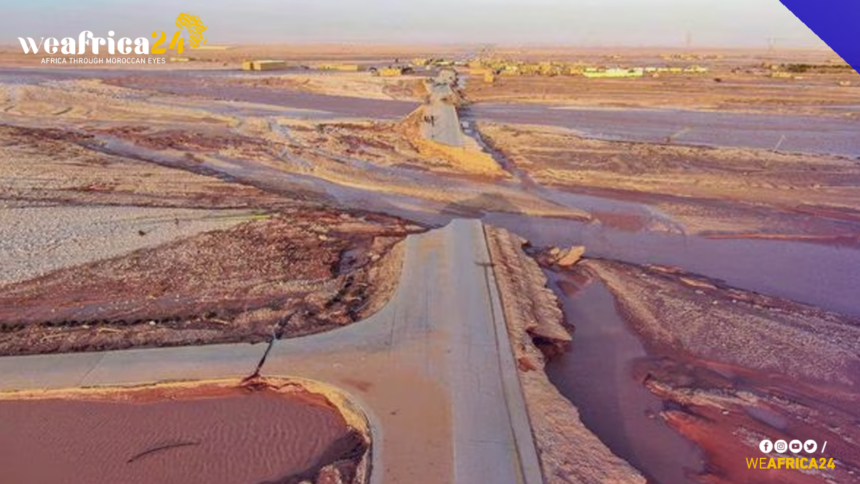Torrential rains have transformed the arid desert of Obari in southwestern Libya into a sprawling lake, where children now play, and created what appears to be “waterfalls” in the Hawarig region, home to North Africa’s largest volcanic mountain range.
This dramatic change in the landscape is a result of continuous rainfall since last Saturday, ranging from moderate to heavy, according to the National Meteorological Center. Weather forecasts indicate that this weather pattern is set to continue, particularly in the Tibesti and Akakus mountain ranges and the city of Ghat near the Algerian border. Rainfall in the coastal regions, including the cities of Sirte, Misrata, and even Tripoli, is expected to be less intense.
Obari’s Lake
The local youth council in the municipality of Obari reported the formation of a massive lake in one of the previously arid valleys near the city. This unexpected phenomenon has drawn children to the waters, as they have never witnessed such abundant rainfall in their lifetimes.
However, the heavy rains have also caused damage in Obari’s Al-Mashrou neighborhood, resulting in the collapse of four houses. Authorities are currently assessing the affected families’ needs in coordination with the Red Crescent Society.
Hawarig Waterfalls
In Hawarig, the surrounding wadis and valleys have filled with water. This area comprises dormant volcanoes that have remained inactive for thousands of years. The natural rock formations and depressions have now become reservoirs, and the crevices have turned into cascading waterfalls. This transformation was documented by Mubarak Aweid, an employee at the Al-Hawarig Oil Operations Company.
Similar scenes unfolded in eastern Libya following the passage of Storm “Daniel” last month, which caused significant damage, especially in the city of Derna. The storm created numerous natural water bodies in several desert areas, most notably the Makhili region.
A 12-Year Drought
Many of Libya’s desert regions in the south have not witnessed significant rainfall for the past 12 years, according to Libyan expert Khaled Al-Badri from the International Institute for Sustainable Development.
Obari is located within the vast Sahara Desert, known for having one of the lowest recorded rainfall rates globally. This recent weather anomaly may mark the beginning of visible climate change effects and could potentially contribute to combating desertification, as suggested by Al-Badri.







